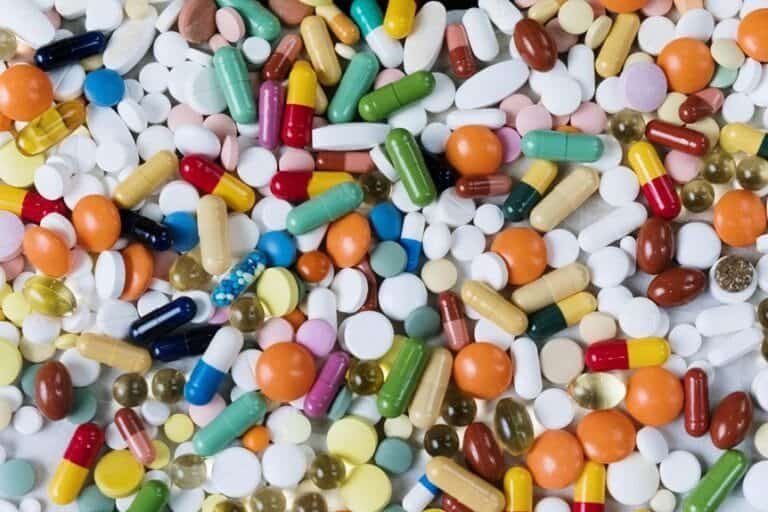Your body primarily produces testosterone in the testes, where Leydig cells convert cholesterol into this essential hormone. In females, ovaries also contribute to testosterone levels alongside the adrenal glands. Synthesis is regulated by luteinizing hormone, which stimulates production while feedback mechanisms maintain balance. Most testosterone circulates bound to proteins, with only a small percentage available for use in tissues. Understanding these processes helps you grasp the significance of testosterone in your overall health and well-being.
Key Takeaways
- Testosterone is primarily produced in the testes for males and in the ovaries for females, with minor contributions from adrenal glands.
- Leydig cells in the testes convert cholesterol into testosterone, driven by stimulation from luteinizing hormone (LH).
- The endocrine system regulates testosterone synthesis through feedback mechanisms affecting LH secretion based on hormone levels.
- About 98% of circulating testosterone is protein-bound, with only 1-2% being bioactive and readily available to target tissues.
- Testosterone influences various body functions, including muscle growth, mood regulation, and metabolic processes.
The Biological Role of Testosterone in the Body
As you explore the biological role of testosterone in the body, you’ll find that this hormone is essential not just in male sexual development but also in various physiological processes.
Testosterone production primarily influences the development of male sexual organs and secondary sex characteristics, including voice deepening and hair growth. It plays a vital role in spermatogenesis, necessary for male fertility. Testosterone is also present in females but in lower concentrations, contributing to overall health and well-being in both sexes. Additionally, testosterone recovery can be an important aspect of restoring hormonal balance.
Beyond reproduction, testosterone’s hormone functions encompass regulating mood and cognition, directly impacting emotional well-being and energy levels.
Additionally, it stimulates anabolic processes that enhance muscle growth and bone density, affecting overall physical health.
Striking a balance in testosterone levels is important, as both deficiencies and excesses can lead to significant health issues.
Where Testosterone Is Produced
Testosterone plays an essential role in various bodily functions, and understanding where it’s produced can clarify its effects on health. The primary testosterone production sites include:
| Production Site | Key Features | Male/Female Contribution |
|---|---|---|
| Testes | Leydig cells convert cholesterol | Major source for males |
| Ovaries | Testosterone produced in lower amounts | Source for females |
| Adrenal Glands | Produces weak androgens | Minor source for both |
In males, approximately 95% of testosterone synthesis occurs in the testes, with the adrenal glands contributing around 5%. In females, the ovaries are a complementary source. Understanding these production sites enhances your knowledge of testosterone’s physiological roles and regulation.
How Testosterone Synthesis Is Regulated
While the endocrine system tightly regulates testosterone synthesis, it’s primarily influenced by luteinizing hormone (LH) from the anterior pituitary. LH stimulates Leydig cells via G-protein coupled receptors, activating adenylate cyclase, which elevates cAMP levels. This initiates protein kinase A (PKA) activity, vital for cholesterol mobilization and the transcription of steroidogenic enzymes.
Feedback mechanisms play a significant role; elevated testosterone levels suppress LH secretion, consequently reducing its own synthesis. Conversely, low testosterone stimulates LH release.
Enzymatic regulation involves essential hydroxylases, such as P450scc and 17β-HSD, in the conversion of cholesterol to testosterone. Thus, precise control of enzymatic activity and feedback sensitivity is important for maintaining hormonal balance and ideal testosterone production.
Transport and Availability of Testosterone
About 98% of circulating testosterone in the bloodstream is bound to proteins, greatly influencing its transport and availability within the body. The key players are sex hormone-binding globulin (SHBG) and albumin, each affecting testosterone’s bioactivity differently.
| Binding Type | Percentage Bound | Characteristics |
|---|---|---|
| SHBG | 44% | High affinity; less available |
| Albumin | 54% | Low affinity; more readily available |
| Free Testosterone | 1-2% | Bioactive; enters target cells easily |
SHBG serves as a high-affinity binding agent, regulating availability, while albumin acts as a temporary transporter. Understanding these dynamics is essential for grasping how hormone binding influences testosterone transport and ultimately, its physiological effects.
Metabolism and Effects of Testosterone in Tissues
The bioavailability of testosterone greatly influences its metabolism and effects within tissues. Testosterone metabolism is fundamental for regulating carbohydrate, fat, and protein metabolism, impacting glycolysis and glycogen synthesis.
In muscle, testosterone enhances insulin sensitivity, vital for maintaining blood sugar levels; this has a protective role against type 2 diabetes. Additionally, increased testosterone activity reduces visceral fat accumulation by modulating lipoprotein lipase, promoting fat breakdown for energy.
With higher testosterone levels, muscle mass flourishes due to the activation of the mTOR pathway, elevating metabolic rate and bolstering glucose disposal. Consequently, ideal testosterone levels improve metabolic health, while deficiency can lead to insulin sensitivity reductions and greater risk for obesity and metabolic syndrome.
Hence, maintaining testosterone balance is essential for metabolic efficiency.
Frequently Asked Questions
Can Diet Impact Testosterone Levels in the Body?
Yes, your diet greatly impacts testosterone levels. Strategic nutrient timing, particularly with dietary fats, can optimize hormone production. Balancing macronutrients and ensuring protein adequacy contribute to maintaining your testosterone levels effectively. Pay attention to your dietary choices.
How Does Age Affect Testosterone Production?
As you age, hormonal fluctuations lead to age-related changes in testosterone production. Starting around 30, levels gradually decline, impacting muscle mass, energy, and overall health, necessitating awareness of these shifts for effective management.
What Are the Symptoms of Low Testosterone?
Low testosterone symptoms include erectile dysfunction, decreased libido, fatigue, and mood changes. If you notice these signs of hormonal imbalance, consider consulting a healthcare professional about testosterone therapy as a potential treatment option to restore balance.
Can Exercise Increase Testosterone Levels?
Yes, exercise can increase testosterone levels. Engaging in strength training and high-intensity workouts promotes temporary boosts in testosterone, especially when performed consistently. The effects, however, can vary based on individual fitness levels and exercise type.
Are There Supplements to Naturally Boost Testosterone?
While some herbal remedies claim to boost testosterone, their effectiveness often lacks robust evidence. Prioritizing sleep quality and healthy habits remains essential for optimizing your hormonal balance, rather than relying solely on unproven supplements.
Conclusion
In conclusion, understanding testosterone’s biological role and production process is essential for comprehending its impact on your health. By recognizing where it’s synthesized and how its synthesis is regulated, you can appreciate its complex transport mechanisms and metabolic effects in various tissues. This knowledge empowers you to make informed decisions about maintaining hormonal balance and overall well-being, ensuring your body’s needs are met effectively. Prioritizing healthy lifestyle choices can support your testosterone levels and optimize your health.
References
- https://www.ncbi.nlm.nih.gov/books/NBK526128/
- https://www.yourhormones.info/hormones/testosterone/
- https://en.wikipedia.org/wiki/Testosterone
- https://www.news-medical.net/health/Testosterone-Mechanism.aspx
- https://www.youtube.com/watch?v=djqqao2Uebo
- https://my.clevelandclinic.org/health/articles/24101-testosterone
- https://www.health.harvard.edu/staying-healthy/testosterone–what-it-does-and-doesnt-do
- https://bio-test.ca/role-of-testosterone/
- https://balancemyhormones.co.uk/where-is-testosterone-produced-in-men/
- https://pmc.ncbi.nlm.nih.gov/articles/PMC3271653/



